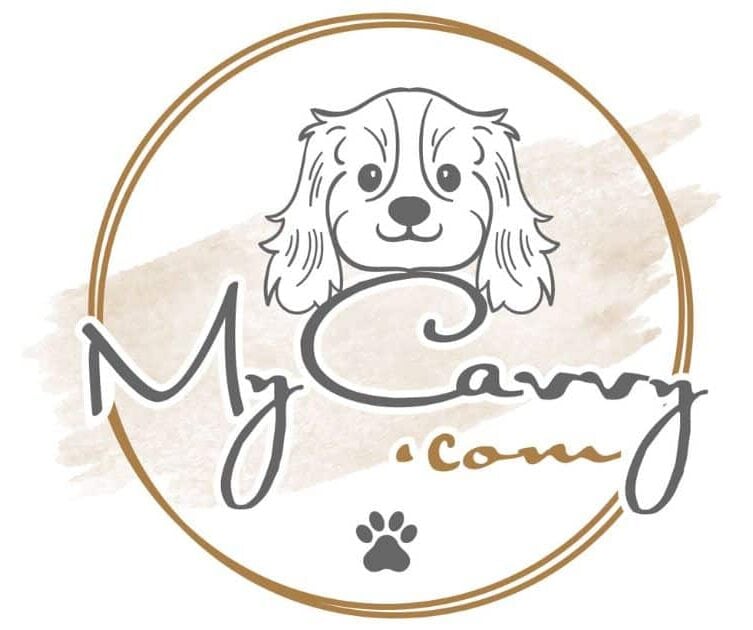Cavalier King Charles Spaniels are a beautiful, loving, and intelligent breed of dog, but are also well known for their multitude of health problems. Having an unhealthy Cavalier can be both an emotional and financial upheaval, so are there ways to prevent these health issues and keep them healthy throughout their lives?
Health issues associated with Cavaliers are hereditary and are therefore passed on from their parents. To ensure a future healthy dog you must question the breeders to verify that your puppy has been bred ethically and under the correct conditions.
Purebred dogs have a small and ever-decreasing gene pool, which means that unethical breeders will not follow the breeding guidelines to rid Cavalier King Charles Spaniels of these hereditary diseases. Read on to learn of the problems your Cavalier could face.
How the Problems Began
The Cavalier King Charles Spaniel breed was first established in 1928, and all modern species of Cavalier have descended from just 6 dogs.
In the past Father-Daughter, Mother-Son, and Brother-Sister matings were a regular occurrence, thus exacerbating the hereditary illnesses passed on from generation to generation. These mating practices are no longer permitted, but oddly enough, distant relationship mating, such as Grandfather-Granddaughter is still allowed to this day.

Hereditary Diseases
There are some common hereditary diseases that are being slowly eradicated by ethical breeders, these are:
- Mitral Valve Disease (MVD)
- Syringomyelia (SM)
- Hip Dysplasia
- Patellar Luxation
- Genetic Eye Disorders
- Episodic Falling Syndrome (EFS)
- Curly Coat
- Degenerative Myelopathy (DM)
To ensure you are purchasing a healthy Cavalier puppy, it would be wise to ask the breeder some questions prior to confirming they are proper breeders and not just greedy puppy farmers.
Mitral Valve Disease (MVD)
What is it?
The Mitral Valve is in the heart, it opens and closes thousands of times a day to ensure that blood flows in only one direction. In Cavaliers, this valve is weak and can let small amounts of blood trickle through the valve.
As time progresses the valve gets weaker and weaker, causing more and more blood to flow in the wrong direction. In some severe cases, the valve can collapse completely which in turn causes heart failure.
What to ask the Breeder
Have you complied with the MVD protocol? Below is the outline for the MVD protocol.
- Each breeding Cavalier needs to be examined by a board-certified veterinary cardiologist annually
- Do not breed a Cavalier that is diagnosed with MVD under the age of 5 years old
- Do not breed any Cavalier under the age of 2.5 years of age
- Do not breed any Cavalier under the age of 5 years old, unless both of its parents’ hearts were MDV-free by the age of 5 years old

Syringomyelia (SM)
What is it?
Chiari-like malformation (CM) is believed to play a major role in the cause of syringomyelia (SM). Chiari-like malformation is prevalent in brachycephalic breeds of dogs and in particular the Cavalier King Charles Spaniel.
Cavaliers have a large brain, too large for their skull, and therefore are squeezed through a hole in the back of the skull. This causes syringomyelia which is a partial blockage of the spinal fluid, it then collects in pockets and causes immense pain.
What to ask the Breeder
Have you complied with the SM protocol? The SM protocol states that all dogs undergo one or more magnetic resonance imaging (MRI) scans of the brain and upper spinal cord. These are then recorded in a database.
Hip Dysplasia
What is it?
Hip dysplasia is abnormal hip joint development, and begins when they are just a young puppy, but gets steadily worse as they develop and grow. It can be exacerbated by increased body weight during the critical early postnatal period.
What to ask the Breeder
Have the hips been x-rayed after age 2 years, and have those x-rays been evaluated and cleared of HD by the Orthopedic Foundation for Animals (OFA)?
A vet check is not a qualified answer, as this does not ensure the hereditary disorder is being eradicated.
Patellar Luxation
What is it?
Also known as a floating knee cap, patellar luxation is essentially the knee cap moving from out of the knee joint.
What to ask the Breeder
Have the knees of both parents been examined and cleared by a qualified veterinarian within a year before the date of birth of the Cavalier puppy you are going to buy?
Verbal confirmation is not acceptable, the breeder must have copies of the examination documents that are also signed and dated by the veterinarian.

Genetic Eye Disorders
What are they?
There are quite a number of different eye disorders that a Cavalier King Charles Spaniel can suffer from, these are:
- Hereditary Cataracts
- Corneal Dystrophy
- Corneal Ulcers
- Distichiasis
- Dry Eye Syndrome
- Entropion
- Microphthalmia
- Progressive Retinal Degeneration
- Retinal Dysplasia
- Cherry Eye
What to ask the Breeder
Have the eyes of both parents been examined and cleared of any serious genetic eye disorders by a board-certified veterinary ophthalmologist within a year before the date of birth of the Cavalier puppy you are going to buy?
Verbal confirmation is not acceptable, the breeder must have copies of the examination documents that are also signed and dated by the veterinarian.
Episodic Falling Syndrome (EFS)
What is it?
Also known as Muscle Hypertonicity, your Cavalier will collapse and paddle its paws around after bouts of excitement or exercise. It isn’t life-threatening and can get better with therapy, but it is very unsettling to watch.
Caused by a single recessive gene associated with brain function, it is a mutation of the BCAN gene and is found only in Cavalier King Charles Spaniels.
What to ask the Breeder
Have both of the parents had their DNA tested for the episodic falling syndrome (EFS)? Ideally, you would want both of the parents to be clear of EFS, which would make the likelihood of all offspring being clear of EFS.

Curly Coat
What is it?
Also known as rough coat syndrome, Curly coat is a severe congenital condition of the skin and coat and only affects some Cavalier King Charles Spaniel puppies.
Curly Coat Syndrome is an abnormality of the Cavaliers coat that is seen by breeders at birth and as the Cavalier becomes an adult, there are signs of skin deterioration. It is an extremely uncomfortable condition and will need a lifetime of daily medicated baths to treat the skin.
What to ask the Breeder
Has the DNA of both parents been tested for curly coat syndrome?
The breeder must have obtained a DNA test result showing that at least one parent is clear of the mutated gene causing curly coat. Never accept just verbal confirmation.
Degenerative Myelopathy (DM)
What is it?
Unable to be cured, Degenerative Myelopathy is a chronic and progressive disorder that results in lameness. Eventually, the hind legs are paralyzed, and there is also more deterioration of muscle control.
What to ask the Breeder
Has the DNA of both parents been tested for Degenerative Myelopathy?
The breeder must have obtained a DNA test result showing that at least one parent is clear of the Degenerative Myelopathy. Verbal confirmation is not an option here.
Sources
For more in-depth knowledge of genetic diseases in Cavalier King Charles Spaniels, please refer to the sources of my information.

6 thoughts on “Cavalier King Charles Spaniels: Are We Healthy”